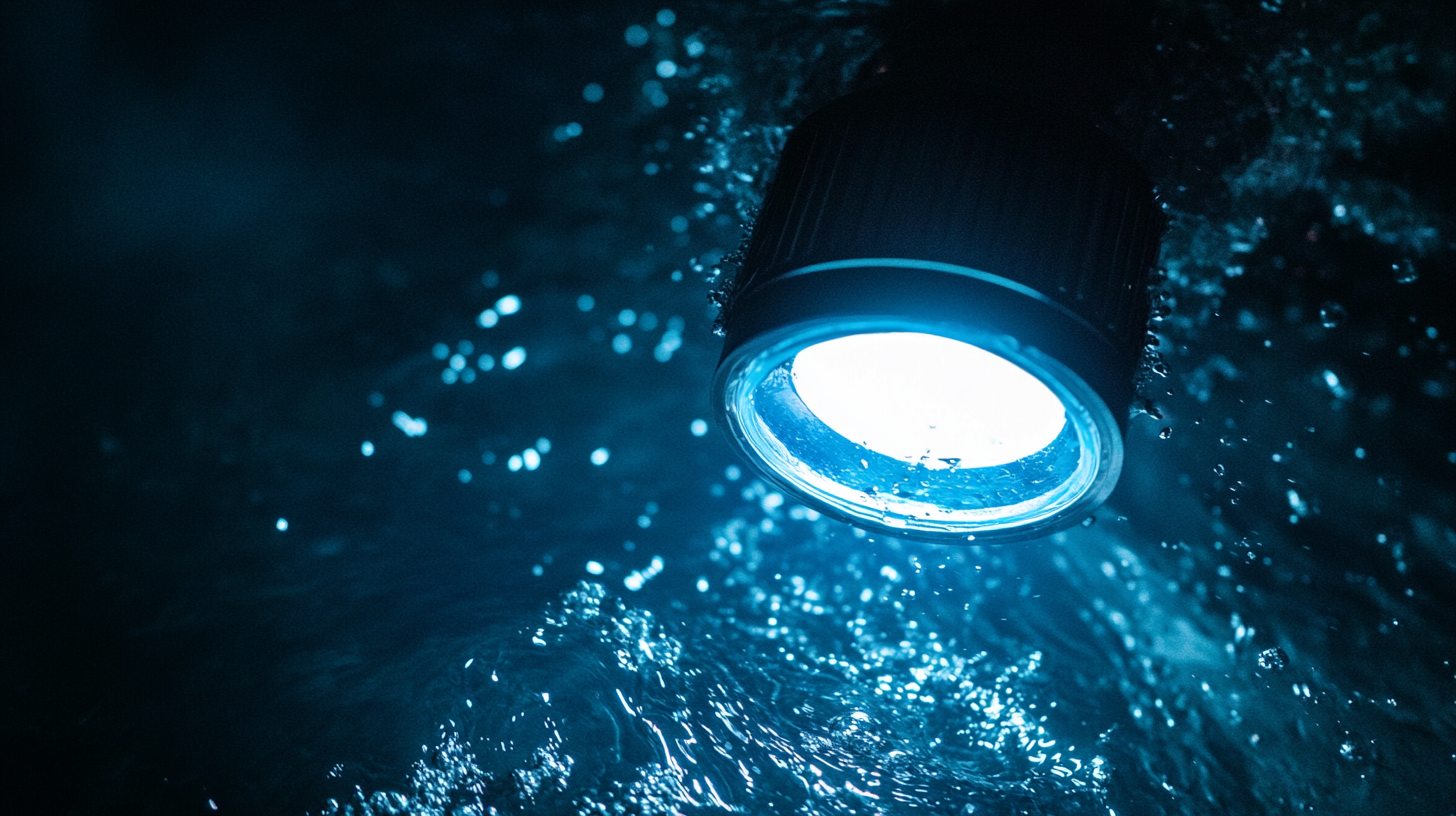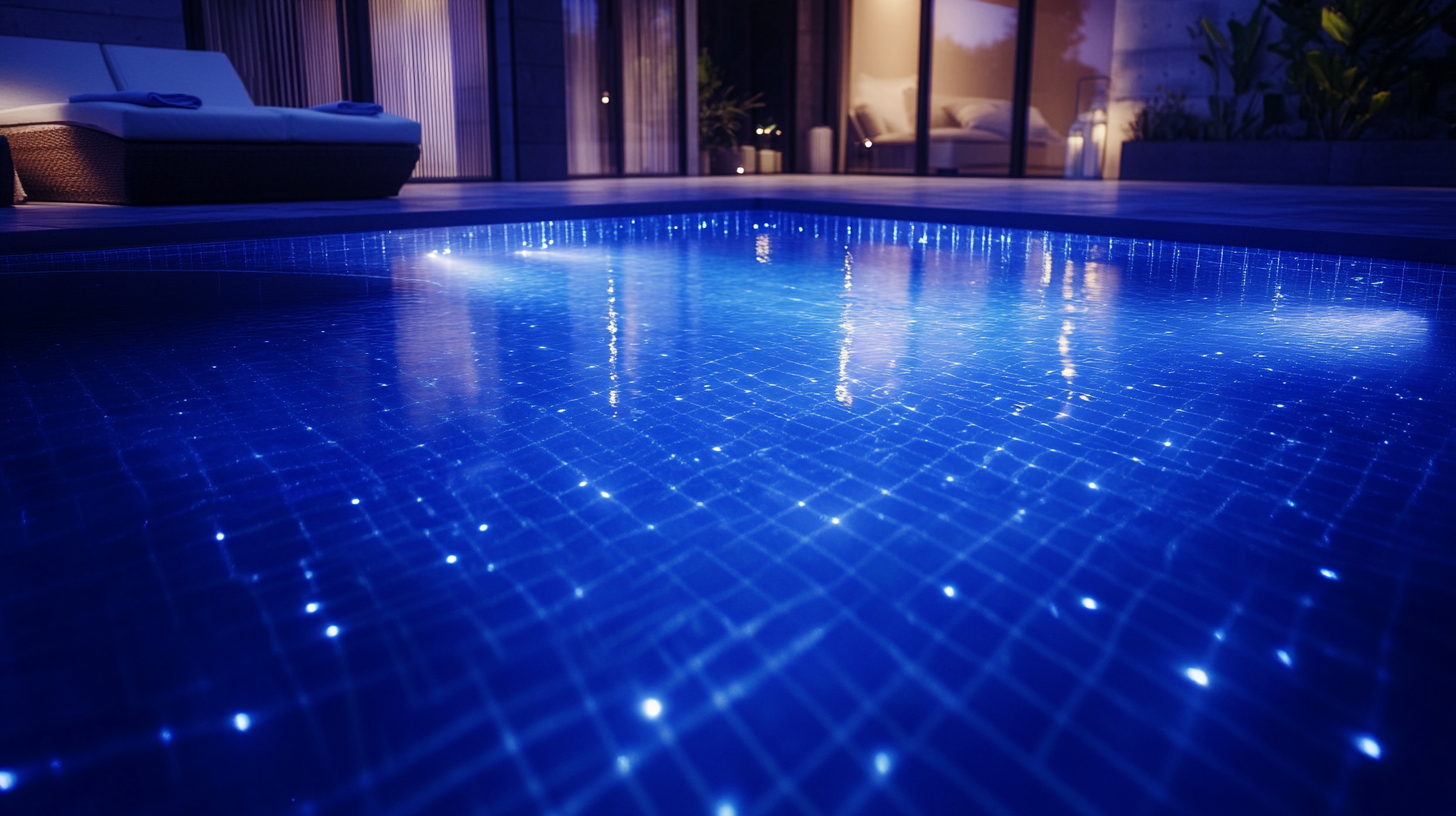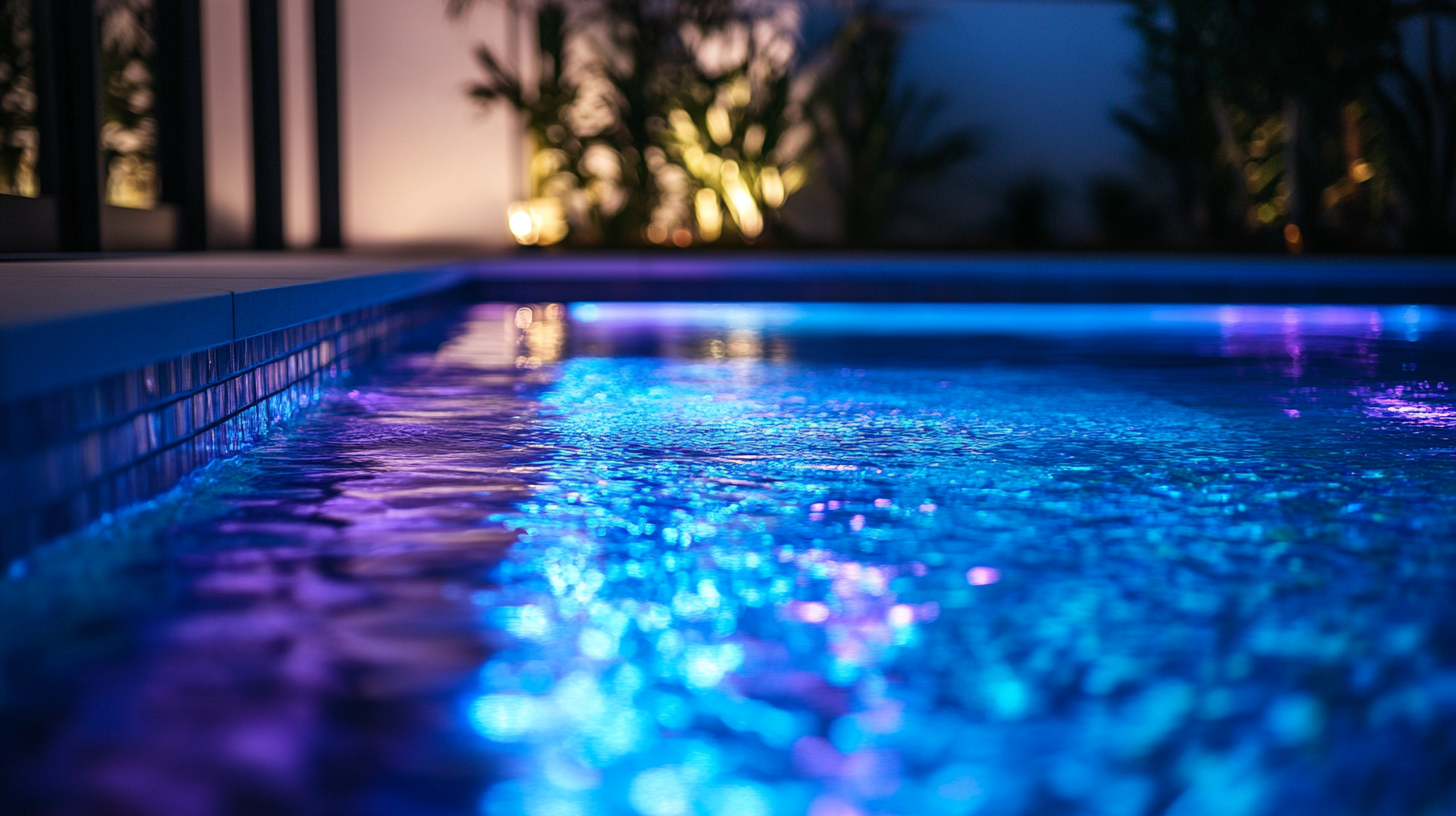How to increase the lifespan of underwater boat lights
When it comes to installing underwater lights, choosing the right materials is key to maximizing their performance and lifespan. Not all underwater lighting systems are created equal, and it pays to invest in high-quality components that can withstand the harsh marine environment. The first step is to select lights made from materials like marine-grade stainless steel, bronze, or high-quality polymer. These materials resist corrosion, one of the biggest threats to any underwater fixture due to constant exposure to saltwater.
Avoid lights made of metals that are prone to rusting or that don’t handle the briny ocean conditions well. This is especially important if you spend a lot of time boating in saltwater. Stainless steel or bronze not only ensures longevity but also enhances the overall aesthetics of your boat. Additionally, consider lights that come with proper seals and lens protection, as a weak seal can easily allow water to seep in, causing electrical damage and reducing the light's life expectancy. These lifespan tips can make all the difference when it comes to maintaining your boat's underwater lighting system.
Finally, opt for energy-efficient LEDs designed specifically for marine use. LED lights are not only durable but also consume less energy, extending both the functionality of your boat and the longevity of the lighting fixture itself. In the world of boat maintenance, investing in the right materials upfront saves costs in the long run while ensuring that you can enjoy a brightly lit underwater experience for years to come.
Proper installation techniques
Proper installation is crucial in ensuring that your underwater boat lights have a long and trouble-free lifespan. Even with the best materials, if the lights are not correctly installed, you could face major issues down the line, including leaks, electrical failures, and subpar lighting performance. To start with, you'll want to mount the lights on a clean, smooth surface, free from any barnacle growth, algae, or debris. This step is often overlooked, but remember that even a small bump or piece of debris can prevent a strong seal, allowing water to seep into the housing and damage the light.
Securing the light carefully is another important part of the process. Be sure to drill holes for cable passages that won't compromise the hull and are placed above any potential waterline leaks, if possible. One of the essential lifespan tips is to use marine-grade sealants around any drilled holes or cable runs. A proper sealant will help prevent any water ingress that could cause corrosion on electrical components or even damage the lights themselves. A once-diligent installation can mean fewer boat maintenance headaches in the future.
It's also vital to ensure that all underwater lights are mounted at the correct depth and angle. When you install lights too close to the surface, they may create glare instead of providing that deep, smooth glow underwater. Conversely, if installed too deep, they may get lost in the ocean’s darkness or be subjected to high water pressure, which could impact their structural integrity. Angle the lights so they spread the beam effectively, brightening underwater objects without straining your power source.
Always follow the manufacturer's installation guidelines when wiring the lights and connecting them to your power system. Incorrect wiring is not only a safety hazard but can dramatically reduce the efficiency of your lights, causing them to dim prematurely or fail altogether. Use appropriate waterproof connectors, and when securing cables, make sure they’re tucked away safely to prevent wear caused by movement or vibration during boating. A thoughtful installation process today can save you countless hours of maintenance and will extend the longevity of your underwater lights, letting you enjoy a vibrant underwater display while cruising in your boat.
Regular cleaning and maintenance
Keeping your underwater lights clean and well-maintained is one of the most effective ways to extend their longevity and performance. The marine environment is naturally harsh, with saltwater, algae, and mineral deposits constantly working against you. One of the first key maintenance routines to adopt is regular cleaning of your lights. Over time, marine growth like algae or barnacles will begin to form a layer on your lights, dimming their brightness and causing strain on the components. You don’t want your lights to become dull when you’re out enjoying an evening cruise — a simple clean every few months can prevent this from becoming an issue.
It’s important to use the right tools when cleaning your underwater lights. Avoid abrasive materials like steel wool, as they can scratch the surface of the lights and ruin the protective coatings. Instead, opt for a soft cloth, sponge, or brush designed for marine use. A bit of mild soap and water usually works wonders on any surface grime or salt buildup. For tougher marine growth, a special marine cleaner can be used, but be sure to stay away from harsh chemicals that may damage your light’s materials, seals, or electrical components.
Pay special attention to the lenses of your underwater lights. They take the brunt of the ocean’s grit and can become cloudy if neglected. A fogged-up lens will reduce the light's effectiveness, and cleaning them is a quick and easy way to restore their brightness. As you clean, inspect the seals and casings around the light. Look out for any signs of water infiltration or cracks. Catching these early on can save you from more expensive repairs or replacements down the road, especially since water damage can wreak havoc on your lights' internal wiring.
A part of regular cleaning is ensuring that any hardware like screws or bolts holding your lights in place are still tight and secure. Lights that become loose can vibrate or shift with the movement of your boat, potentially damaging them or causing leaks in the seals. So, while you’re wiping down the light, check that everything is firmly in place. These small maintenance steps not only keep your lights shining brightly but also extend their lifespan significantly, proving that regular attention makes a difference in overall boat maintenance routines.
Finally, don’t forget about periodic inspections beyond just cleaning. While you may not always notice certain issues from a casual glance, a close look at your lights at least a couple of times a year — before and after heavy boating seasons — will help you spot any problem areas. These could include loosening seals, small chips in the lenses, or early signs of corrosion on the light’s surface. By tending to minor fixes early on, you’ll keep your underwater lights functioning optimally and avoid the frustrations of unexpected failures while out on the water. Regular maintenance like this not only ensures your boat looks great, but also enhances your boating experience under the stars.
Managing electrical connections
Managing your boat's electrical connections is crucial for ensuring the longevity and performance of your underwater lights. Faulty or poorly managed electrical systems are one of the leading causes of light failure in marine environments, primarily due to issues like corrosion, water infiltration, or simply inefficient wiring. To maximize the lifespan of your underwater lights, it's important to follow proper guidelines and use marine-grade components designed for wet and harsh conditions.
Waterproofing is one of the most important considerations for maintaining a healthy electrical connection. All connectors, wire joints, and terminals exposed to the marine environment should be fully sealed. Use waterproof connectors or heat-shrink tubing designed specifically for marine applications. These will provide a snug, moisture-resistant seal, preventing water from finding its way into critical electrical components, which could ultimately lead to short circuits or complete light failure. Additionally, it's essential to use marine-grade wires that have a tinned copper construction. Tinned copper wiring resists corrosion better than typical bare copper wire, which helps to prolong the lifespan of your underwater light system, especially in salty environments.
Wire gauge selection is another important element. Using the proper wire gauge ensures that there’s minimal voltage drop over the length of the wire, helping your lights run at optimum performance. Too much voltage drop over a long wire run can lead to dim lights or even overheating. Refer to the manufacturer’s instructions for the minimum recommended cable size based on the distance of the wire run and the current draw of your underwater light fixture.
| Cable Distance | Recommended Wire Gauge |
|---|---|
| Up to 10 feet | 16 AWG |
| 10-20 feet | 14 AWG |
| 20-30 feet | 12 AWG |
Wherever wires need to be joined or split, quality is paramount. Use high-quality marine-grade connectors, and when making wire splices, always seal them with a double layer of protection, such as heat-shrink tubing over derated solder joints or crimp connectors. Electrical tapes alone are not sufficient; they can break down over time in marine environments, especially when exposed to UV rays and saltwater. Properly sealing connections prevents exposure to water, which could otherwise lead to electrical shorts or corrosion.
Another key strategy for ensuring long-lasting electrical performance is to install a dedicated fuse or circuit breaker for your underwater lighting system. This is a crucial boating safety step. In the event of a short or other electrical fault, the fuse will trip immediately, preventing potential damage to your boat’s electrical system or the lights themselves. Be sure to use a fuse with the appropriate amperage rating, as specified by the manufacturer.
Most importantly, regularly inspect your lights’ electrical connections as part of your overall boat maintenance routine. Corrosion can occur even in well-sealed systems, so it’s essential to check for any signs of rust, wear, or compromised seals. Commonly affected areas include exposed wire ends, battery terminals, or connectors inside junction boxes. Any indication of water ingress or corrosion should be addressed immediately before it leads to a more severe damage, which could result in a total lighting system failure or worse, major electrical system damage on your boat.
Lastly, ensure that the connections for your lights are properly grounded. Grounding prevents stray or excess electrical currents from causing interference with your lighting system’s operation. If stray currents build up, they can accelerate corrosion in metal parts, including the lights or their housings, leading to faster wear and tear and ultimately reducing the actual brightness of your lights over time. Proper grounding goes hand-in-hand with using high-quality materials and connectors, contributing greatly to the long-term effectiveness and safety of your underwater lighting system.
Protecting lights from marine growth
Marine growth is one of the biggest threats to the durability and functionality of underwater lights. Algae, barnacles, and other marine organisms love to attach themselves to any submerged surfaces, and your lights are no exception. If left unchecked, this buildup can significantly reduce the performance of your lights by obstructing their brightness and adding unnecessary strain to the systems. To combat this natural phenomenon, one of the most effective measures you can take is applying anti-fouling coatings specifically designed for underwater lights. These coatings create a smooth, slippery barrier that makes it difficult for marine organisms to cling to the light’s surface, keeping them clear and functioning properly for longer periods. Applying an anti-fouling coating when you first install your lights, and reapplying it regularly, is a simple yet effective way to protect your investment.
Beyond coatings, physical barriers can also offer protection. Some boaters opt for a protective cover over their lights when not in use, especially if the boat will be docked for extended periods. These covers act as a shield, preventing algae and barnacles from settling onto the light fixtures. Just remember to remove the covers before heading out for a voyage, so your lights can shine at full brightness.
If marine growth does begin to form, which is almost inevitable over time, it’s crucial to clean it off promptly. Use non-abrasive scrubbing tools or a soft brush to remove any growth when you notice it. Harsh scrubbing can scratch or wear down the light's housing or lens, leading to both aesthetic damage and possible reductions in performance. For stubborn growth, gentle scraping may be necessary, but always take care not to damage the coatings or seals of your lights in the process. In some cases, applying a bit of marine-safe cleaner can also help dislodge stuck-on debris without harming the light materials.
Another strategic approach is to consider the placement of your underwater lights. Installing them in areas that receive decent water flow can help minimize growth simply through the natural movement of water. On the flip side, if you mount lights in sheltered or stagnant areas of your boat, they are more likely to become a prime target for algae and barnacle colonization. Thinking ahead of where you install your lights can pay dividends in reducing the need for constant cleaning and minimizing the risks of damage.
Incorporating regular inspections into your routine boat maintenance can also help in staying ahead of marine growth issues. When you're cleaning your boat's hull or performing your routine maintenance checks, take a minute to inspect your underwater lights. Some early signs of marine growth can be very subtle, like a barely noticeable film or slight discoloration of the lenses. If caught early, these issues can often be remedied with minimal effort. However, if allowed to fester, they can cause substantial damage, forcing you to invest in costly replacements sooner than anticipated.
Consider using lights with integrated anti-fouling technology. Some underwater lights come equipped with features like built-in wipers or UV light zones designed to discourage marine organisms from attaching themselves to the fixture. While these lights may come with a higher upfront cost, the reduction in cleaning time and extended lifespan can make them a worthwhile investment for any boat owner wanting to minimize downtime and maintenance while maximizing the beauty of their underwater setup.


